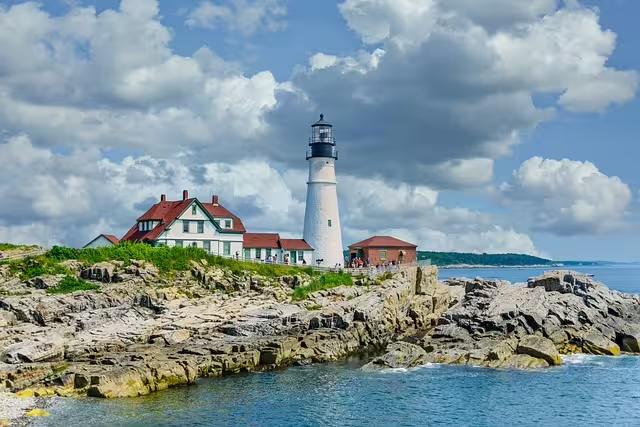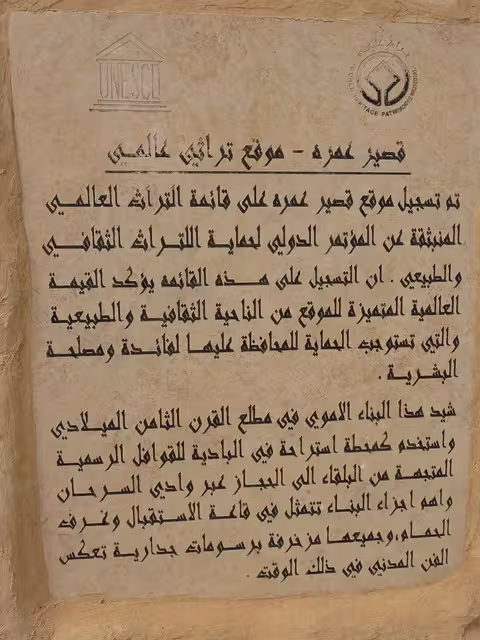Consider the quiet rejection a user feels when landing on a website that is technically flawless yet alien or unknown to their native culture. Nothing is broken—the buttons function, the layout is logical—but a profound sense of dissonance settles in, an intangible feeling of being an outsider. We navigate a global internet, a vast digital commons, yet our perception remains filtered through an intensely personal, local lens. This moment of disconnect is where billion-dollar marketing campaigns falter and user trust evaporates.
A website’s aesthetic is its most immediate language, a cascade of non-verbal cues delivered in the milliseconds before a single word of copy is ever read. It is a communication that can forge an instant bond or erect an invisible wall. When this silent dialect aligns with a user’s ingrained cultural identity, it creates resonance—a sense of belonging, fluency, and trust. When it misaligns, that friction drives users away, often without them consciously articulating why.
This article moves beyond intuition to provide a technical framework for decoding and implementing culturally-influenced design. We will posit that authenticity is not merely a design choice but a quantifiable asset, the primary driver of user engagement and successful local market penetration. Through an analysis of core aesthetic components, a review of global case studies, and an exploration of the profound link between local culture, biophilic principles, and search engine optimization, we will construct a new lens for creating websites that don’t just exist on the internet, but truly belong to a place.
Table of Contents
Foundational Concepts: Defining Culture in a Digital Interface

This section establishes the theoretical bedrock upon which a practical design strategy can be built. Before a single pixel is placed, one must understand the invisible forces that shape a user’s perception.
From Anthropology to Pixels: Translating “Local Culture” into Design Axioms
In a digital context, “local culture” transcends simple geography or language. It is a complex matrix of shared values, historical narratives, artistic traditions, social norms, and, critically, the relationship with the surrounding natural environment. For design purposes, we can distill this into actionable data points. A key analytical tool is the concept of high-context versus low-context cultures.
- Low-Context Cultures (e.g., Germany, Scandinavia, USA): Communication is explicit, direct, and unambiguous. For web design, this translates to minimalist layouts, clear calls-to-action, linear navigation, and a focus on efficient information retrieval. The design’s value is in its utility and clarity.
- High-Context Cultures (e.g., Japan, Arab nations, Latin America): Communication is nuanced, layered, and relational. Meaning is often derived from context, not just words. This manifests in web designs that may be richer in detail, more interconnected, and value aesthetic harmony and brand storytelling as much as pure function. The design’s value is in the experience and the relationship it builds.
Understanding where a target audience falls on this spectrum is the first step in creating a resonant structure.
The Semiotics of Web Design: Visual Elements as Cultural Signifiers
Every element on a webpage is a sign that carries meaning—this is the principle of semiotics. A designer who ignores this is communicating unintentionally. While some icons have achieved near-universal recognition (e.g., the magnifying glass for search), many visual cues are culturally coded. The choice of a symbol, the thickness of a line, or the sharpness of a corner is a form of micro-communication. A design that uses sharp, aggressive angles may signify modernity and strength in one culture but could be perceived as confrontational and unstable in another. We must analyze a design’s symbolic lexicon to ensure it speaks the correct local dialect, preventing misinterpretation before it occurs.
The Core Aesthetic Components Modulated by Culture
With the foundational theory in place, we can now dissect the primary components of web aesthetics and examine how they are modulated by local culture.
Color Theory: Beyond the Wheel, Into the World
Standard color theory provides a universal framework, but cultural symbolism infuses it with local meaning. The classic example is white, signifying purity and weddings in the West, while representing mourning in many Eastern cultures. However, a more profound and biophilic approach is to source color palettes directly from a region’s environment. A website for a brand in Arizona should feel different from one in coastal Maine.

- Arizona Example: The palette (HEX, RGB) would draw from the deep ochres of the soil, the muted greens of cacti, and the brilliant oranges of a desert sunset. The aesthetic feels warm, earthy, and expansive.

- Maine Example: The palette would utilize the slate grays of the rocky coastline, the deep blues of the Atlantic, and the dark greens of pine forests. The aesthetic feels cool, rugged, and resilient.
This method grounds the digital experience in a tangible, physical reality, creating an immediate and authentic sense of place.
Typography & Language: The Voice of a Region

Typography is the voice of your text. On a technical level, this involves accommodating script directionality, such as the right-to-left (RTL) scripts used in Arabic and Hebrew, which fundamentally alters site layout. On an aesthetic level, fonts carry distinct personalities and historical baggage. The clean neutrality of Helvetica is a product of Swiss modernist philosophy. The classic elegance of Garamond speaks to its roots in Renaissance France. Choosing a typeface that aligns with a region’s character—or deliberately choosing one that contrasts with it—is a powerful statement. This must be paired with true language localization that goes beyond translation to incorporate local idioms, tone, and cultural references, ensuring the voice is not just understood, but felt.
Imagery & Iconography: Authentic Representation
The use of generic, globalized stock photography is the fastest way to create a digital uncanny valley. Users can detect inauthenticity instantly. A website targeting residents of Philadelphia that uses images of people who are clearly not from the area, in settings that look like a generic West Coast office, creates immediate distrust. Authentic representation is paramount. This requires investing in photography that features local people, recognizable cityscapes, and regional architecture.
From my biophilic perspective, it also means showcasing local biota—the specific flora and fauna of the region. An icon set for a Pacific Northwest company might incorporate motifs of ferns and salmon, while one for a business in the Southeast might draw from the patterns of a palmetto leaf or the shape of a live oak. This avoids caricature while embedding a deep, authentic local identity.
Layout, Spacing, and Structure: Cultural Rhythms in UI/UX
The arrangement of elements on a page—the site’s visual rhythm—is heavily influenced by cultural norms regarding information density and personal space. As noted with high-context cultures, some audiences are comfortable with and may even prefer a higher density of information, with numerous links and interconnected content blocks. This can be seen on many popular web portals in East Asia. Conversely, Western design, particularly from Scandinavian and German traditions, prizes negative space (whitespace), treating it as an active element that promotes focus and reduces cognitive load. The structure of a website’s grid system, whether it is rigid and ordered or organic and flowing, should be a deliberate choice that reflects the cultural precedent of its target audience.
Case Studies: Global Examples of Localized Aesthetics
Theory must be validated by practice. These case studies demonstrate successful cultural integration.
Case Study 1: Japanese Minimalism and Wabi-sabi

The Japanese aesthetic is often informed by the philosophy of Wabi-sabi (侘寂), the appreciation of imperfection, transience, and simplicity. This is not just minimalism; it is a philosophy of finding beauty in natural, unadorned objects and spaces.
- Characteristics: Asymmetry, extensive use of negative space, natural textures (wood grain, paper), muted color palettes, and a focus on a single, compelling focal point.
- Example: The website for the brand Muji. It avoids flashy promotions, using a simple grid, high-quality product photos on plain backgrounds, and uncluttered typography. The site feels calm, honest, and functional, perfectly reflecting the brand’s cultural philosophy.
Case Study 2: Scandinavian Functionalism and Hygge
Scandinavian design is rooted in functionalism and social democracy—the idea that well-designed objects should be accessible to all. This is coupled with the cultural concept of Hygge, which embodies coziness, comfort, and contentment.
- Characteristics: Clean lines, light and airy color palettes, an abundance of whitespace, high-quality sans-serif typography, and an intuitive, human-centric user experience. Function is paramount.
- Example: The official tourism website for Finland, VisitFinland.com. The navigation is simple, the imagery is stunning but clean, and the color palette is drawn from the lakes and forests. The user feels calm and invited, not overwhelmed. The design prioritizes helping the user accomplish their goal with ease.
Case Study 3: New England Vernacular (United States)
Drawing from my own experience in this region, the New England aesthetic is shaped by its colonial history, rugged landscape, and maritime traditions. It is a vernacular of practicality, resilience, and understated tradition.
- Characteristics: Muted color palettes reflecting the region’s seasons (autumnal oranges, slates, colonial blues), serif typography that evokes a sense of history and academia, and imagery that is often rugged, natural, and unpretentious.
- Example: The online presence of a brand like L.L. Bean. The website design is straightforward and product-focused. The photography emphasizes the outdoors and durability. The color scheme is earthy and practical. It successfully communicates a long-standing identity rooted in the New England environment.
Implementation: SEO and the Biophilic Connection
A culturally-attuned design is not merely an artistic exercise; it is a technical asset that delivers measurable results for search engine optimization and user engagement.
Local SEO Signals: Beyond Keywords and NAP
While keywords and Name/Address/Phone (NAP) consistency are foundational for local SEO, Google’s algorithms are increasingly sophisticated, weighing user engagement signals heavily. A website with a resonant local aesthetic directly improves these metrics:
- Lower Bounce Rate: When users feel an immediate connection and sense of belonging, they are less likely to “bounce” back to the search results.
- Higher Dwell Time: An authentic and engaging design encourages users to explore more pages, increasing the average time they spend on the site.
- Increased Conversion Rates: Trust is a direct precursor to conversion. A culturally fluent website builds that trust, leading to more form submissions, purchases, and inquiries from local search traffic.
These positive signals tell search engines that your site is a high-quality, relevant result for queries from that specific geographic region.
The Biophilic Imperative: Nature as the Root of Local Culture
This is my core thesis: the most powerful and authentic local designs are rooted in biophilia—the human affinity for nature. A region’s culture did not develop in a vacuum; it was forged by the landscape, climate, flora, and fauna. By integrating elements of the local biota and natural environment, we tap into the deepest layer of cultural identity. This moves beyond surface-level aesthetics to something more profound. Instead of just using a green color palette for a Vermont-based brand, incorporate a background pattern derived from the venation of a maple leaf (Acer saccharum).
For a website targeting a tropical region, use UI elements with patterns modeled on the leaves of a nerve plant (Fittonia sp.). By embedding these location-specific natural patterns and textures, you create a design that is not just culturally appropriate, but deeply, primordially resonant.
Conclusion: Designing for a Global Network of Local Communities
To treat web design as a monolithic, one-size-fits-all discipline is to ignore the rich diversity of human experience and culture. We have demonstrated that a website’s aesthetic is a potent form of communication, capable of building immediate trust or creating subtle alienation. By systematically analyzing the core components of design—color, typography, imagery, and layout—through a cultural lens, we can move from generic templates to authentic digital experiences.
The most effective websites are not just translated; they are transmuted, reborn with a local soul following the culture of the area. By embracing a data-driven approach grounded in anthropology and the timeless principles of biophilic design, we can create a more beautiful, more effective, and more human internet—one built for a global network of distinct local communities.

